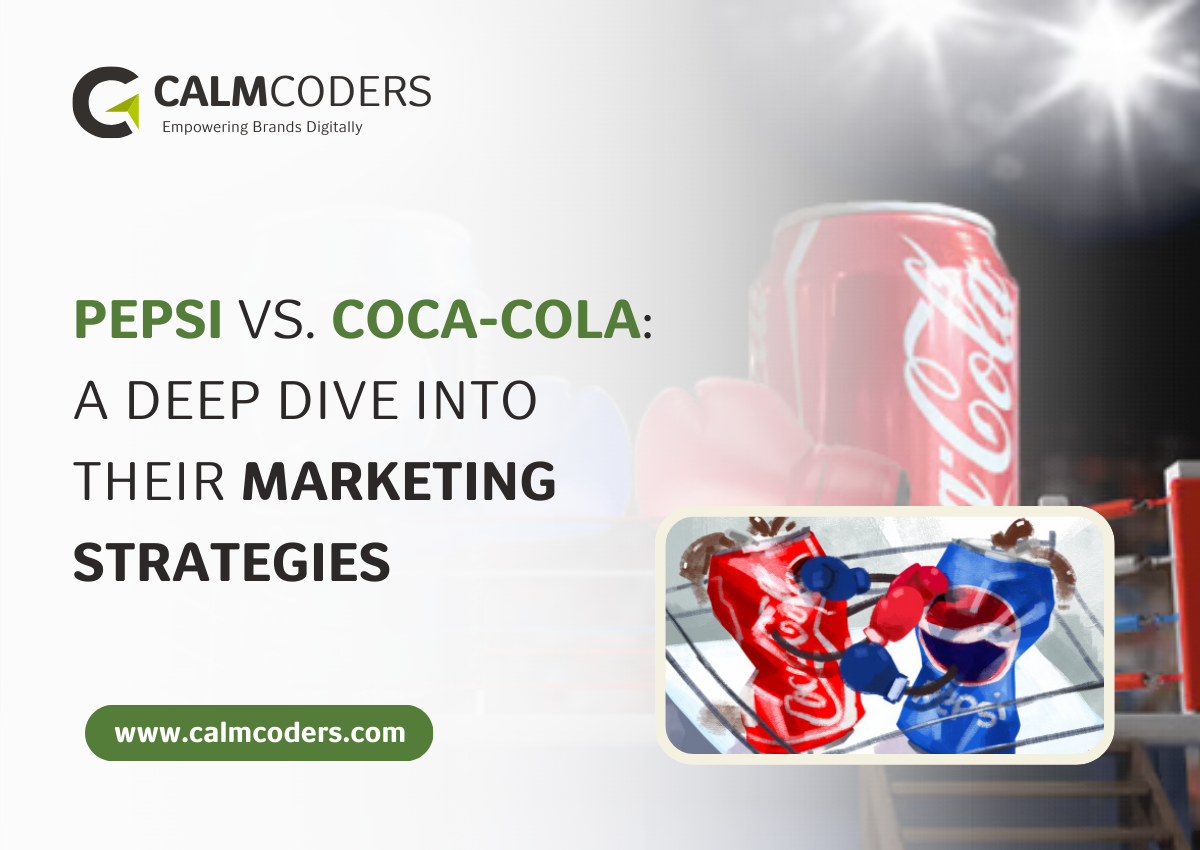Pepsi and Coca-Cola are two of the most well-known beverage brands worldwide, competing fiercely for market dominance for over a century. Both companies employ unique marketing strategies to capture customer loyalty, drive sales, and maintain their positions as industry leaders. This article provides an in-depth analysis of their marketing tactics, branding approaches, and digital strategies to understand how they remain at the top of the global beverage market.
The History of the Rivalry
The Pepsi vs. Coca-Cola rivalry dates back to the late 19th century when Coca-Cola was invented in 1886, followed by Pepsi in 1893. Since then, both brands have evolved through multiple marketing transformations, using innovative advertising campaigns, celebrity endorsements, and strategic pricing to outdo one another.
Branding and Positioning Strategies
Coca-Cola’s Branding Strategy
Coca-Cola’s branding is centered around happiness, nostalgia, and emotional connections. The company utilizes:
- Consistent Brand Messaging: “Open Happiness” and “Taste the Feeling” campaigns reinforce the emotional appeal.
- Heritage and Tradition: Coca-Cola leverages its rich history and classic logo to maintain brand recognition.
- Global Appeal: The brand’s universal red and white colors, along with uniform taste, ensure worldwide consistency.
Pepsi’s Branding Strategy
Pepsi, on the other hand, positions itself as the youthful and dynamic alternative to Coca-Cola. Its key branding elements include:
- Modern and Trendy Appeal: Pepsi frequently reinvents itself to stay relevant to younger audiences.
- Celebrity Endorsements: Stars like Beyoncé, Britney Spears, and Michael Jackson have been the face of Pepsi campaigns.
- Social Media and Digital Engagement: Pepsi emphasizes digital advertising and interactive campaigns to engage the tech-savvy generation.
Advertising and Promotional Strategies
Coca-Cola’s Advertising Tactics
Coca-Cola’s advertising approach is storytelling-driven, using:
- Emotional Storytelling: Commercials focus on bringing people together (e.g., “Share a Coke” campaign).
- Seasonal Campaigns: Iconic holiday ads, such as the Coca-Cola Christmas trucks, create seasonal excitement.
- Sponsorships and Partnerships: Sponsorships with major global events like the FIFA World Cup and Olympics reinforce brand credibility.
Pepsi’s Advertising Tactics
Pepsi, in contrast, takes an edgy and trend-driven approach with:
- Pop Culture Integration: Campaigns featuring Super Bowl halftime shows and music festivals attract younger audiences.
- Humorous and Bold Ads: Pepsi’s commercials often include humor and challenge traditional norms (e.g., Pepsi Challenge).
- Limited Edition Products: Special flavors and collaborations keep consumer interest alive.
Social Media and Digital Marketing
Coca-Cola’s Digital Strategy
Coca-Cola leverages digital marketing by:
- User-Generated Content: Encouraging consumers to share experiences with Coke using branded hashtags.
- YouTube Campaigns: Engaging storytelling ads optimized for digital platforms.
- Influencer Collaborations: Partnering with social media influencers to expand reach.
Pepsi’s Digital Strategy
Pepsi excels in digital marketing by:
- Engaging Social Media Campaigns: Creating interactive posts and challenges (e.g., #PepsiMoji campaign).
- Augmented Reality (AR) and Virtual Reality (VR): Incorporating innovative technology in promotional activities.
- TikTok and Gen Z Targeting: Leveraging trends and viral challenges to attract younger consumers.
Market Share and Sales Performance
While both brands maintain strong global market shares, Coca-Cola leads in overall revenue, with a broader product portfolio. However, PepsiCo has diversified beyond beverages, owning brands like Lay’s, Gatorade, and Tropicana, strengthening its financial position.
Key Takeaways and Future Trends
- Sustainability Initiatives: Both companies are investing in eco-friendly packaging and reducing carbon footprints.
- Health-Conscious Products: The rise of sugar-free and organic beverages influences product development.
- Evolving Digital Strategies: AI-driven marketing and personalized customer experiences will shape future campaigns.
Ooh (Hoarding) Advertising vs. Digital Marketing: Which is Right for You?
10+ Best Digital Marketing Agencies in Ahmedabad: Boost Your Business
DV360 vs Google Ads: How to Choose the Right Platform for Your Business
Final Thoughts
Pepsi and Coca-Cola have set benchmarks in the marketing world, continuously evolving to meet changing consumer preferences. While Coca-Cola thrives on emotional connections and legacy branding, Pepsi stays ahead by leveraging pop culture and digital trends. Both brands will continue to innovate, adopting new technologies and sustainable initiatives to capture the next generation of consumers. As the beverage industry evolves, their strategies will shape the future of global marketing.




